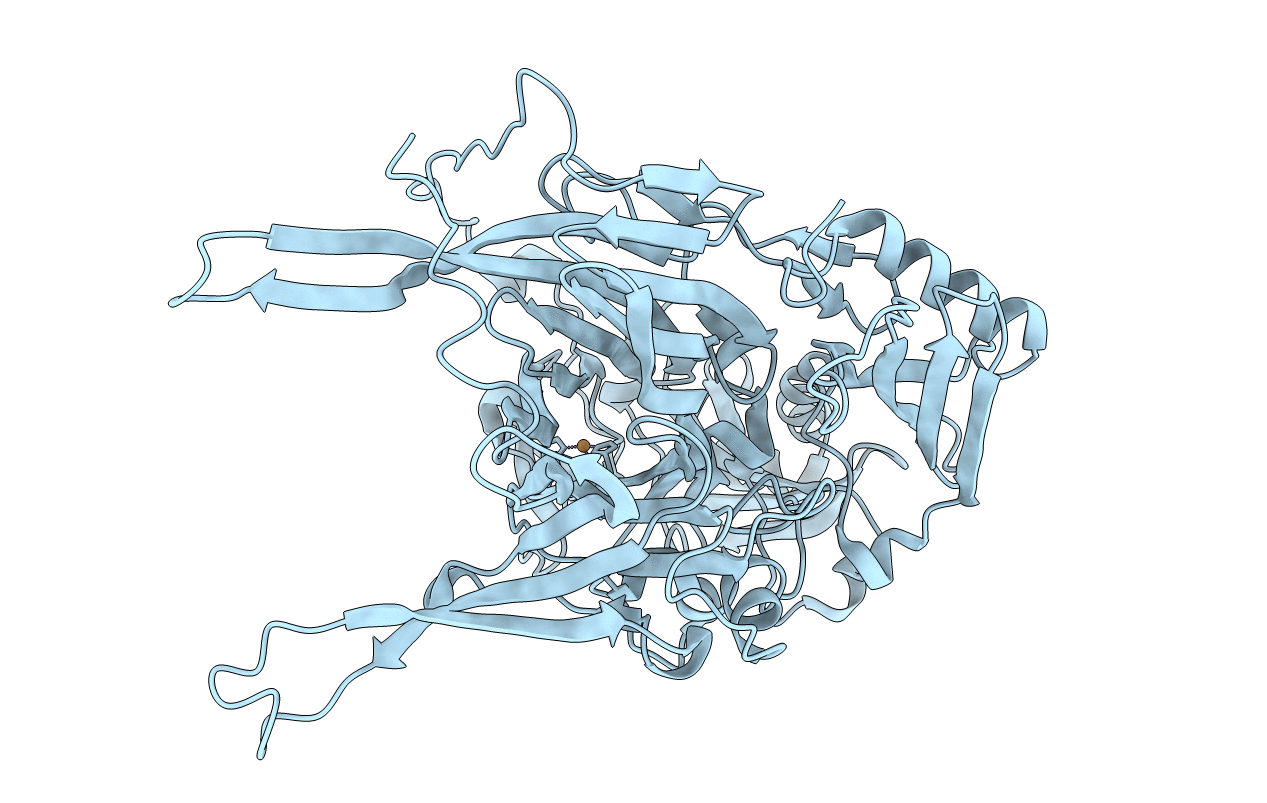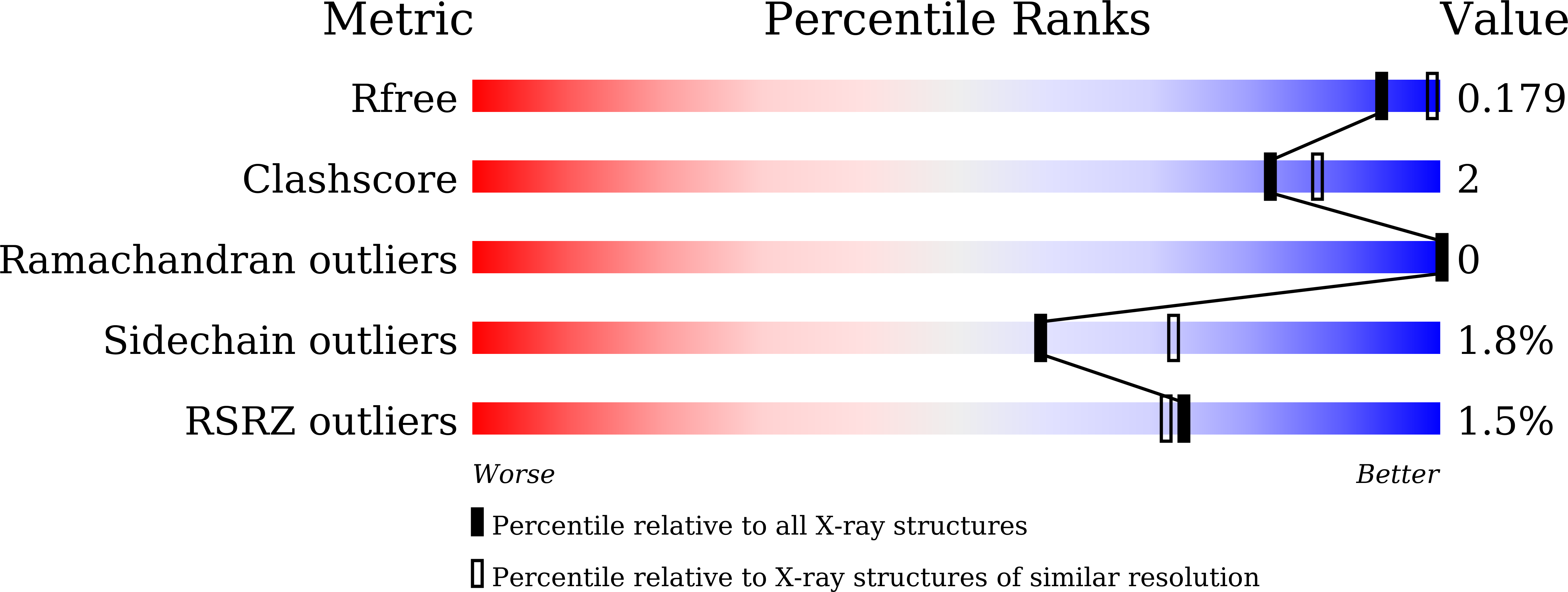
Deposition Date
2021-07-02
Release Date
2021-09-08
Last Version Date
2021-10-13
Entry Detail
PDB ID:
7F8K
Keywords:
Title:
Room temperature structure of bacterial copper amine oxidase determined by serial femtosecond crystallography
Biological Source:
Source Organism:
Arthrobacter globiformis (Taxon ID: 1665)
Host Organism:
Method Details:
Experimental Method:
Resolution:
2.20 Å
R-Value Free:
0.17
R-Value Work:
0.15
R-Value Observed:
0.15
Space Group:
C 1 2 1


